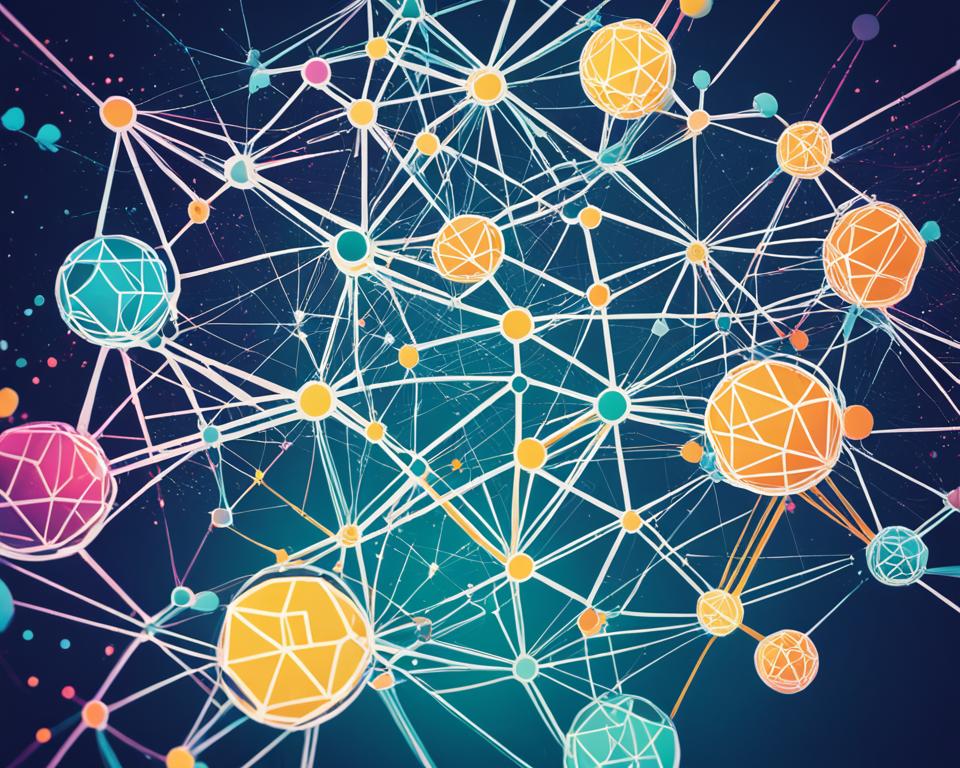Understand Distributed Ledger Technology
Adverts
A distributed ledger technology, also known as Distributed Ledger Technology (DLT), is responsible for revolutionizing data management and ensuring cutting-edge digital security. One of the main categories of DLT and the Blockchain, famous for being the basis of cryptocurrencies like Bitcoin. However, DLTs have applications in diverse sectors, such as finance, transportation, environment, logistics, healthcare and education. The basic concept of DLTs involves the logical architecture peer-to-peer network, encryption and distributed registration across different network nodes. The implementation of the database through DLTs brings features such as adding only records, immutability guaranteed by encryption and consensus mechanisms that classify databases as permissionless or permissioned.
Main points of the section:
- A distributed ledger technology (DLT) revolutionizes data management
- A Blockchain is a DLT category famous for being the basis of cryptocurrencies
- DLTs have applications in various sectors, such as finance, transportation and healthcare
- The basic concept of DLTs involves logical architecture, cryptography and consensus
- DLT implementations ensure record addition, immutability and consensus
Blockchain Architecture
A Blockchain is one of the categories of DLTs and stands out for its logical architecture based on blocks chained. Each block contains information added to the database and is linked to the previous block, forming a sequence of blocks. The veracity of these blocks is verified by P2P network nodes using consensus algorithms. The Blockchain architecture is defined by the way data is stored in a sequence of blocks and distributed to other nodes in the network.
Adverts
Blockchain architecture is designed to ensure the security and transparency of transactions. The blocks, which contain the transactional information, are validated and added to the existing blockchain. To guarantee the integrity of the information, each block is connected to the previous block using a cryptographic hash, forming an immutable sequence.
Adverts
P2P network nodes play a key role in verifying blocks. Using consensus algorithms, such as Proof of Work (PoW) or Proof of Stake (PoS), nodes validate and record transactions, ensuring the consistency and security of the network.
Blockchain's logical architecture offers significant advantages such as decentralization and tamper resistance. By distributing the validation process among network nodes, dependence on a central authority is eliminated, increasing the security and transparency of transactions.
“Blockchain has the potential to transform the way transactions are carried out across industries, from financial services to supply chains and elections.”
– Specialist in Distributed Registry Technology
DAG architecture
The architecture DAG (Directed Acyclic Graphs) emerged as a response to Blockchain processing bottlenecks. Unlike Blockchain, in which only one block can be validated at a time, DAG allows multiple blocks to be validated at the same time due to the existence of multiple connection paths between nodes.
This architecture is based on directed acyclic graphs, in which blocks connect to each other and increase the speed of the verification process.
An example of applying the architecture DAG is the IOTA cryptocurrency. Instead of using a linear chain of blocks, IOTA uses a directed acyclic graph called a Tangle. This Tangle allows for parallel validations, resulting in a significant increase in speed and scalability.
The DAG architecture offers a fundamental advantage over traditional Blockchain: the ability to validate multiple blocks simultaneously. This makes the DAG architecture a promising alternative for applications that require high speed and efficiency in transaction processing.
– John Smith, blockchain expert
In addition to IOTA, other cryptocurrencies are adopting the DAG architecture as a scalable solution. This is the case of Nano and Byteball, which are based on directed acyclic graphs to facilitate fast, low-cost transactions.
| Comparison between DAG and Blockchain Architecture | DAG | Blockchain |
|---|---|---|
| Transaction validation speed | High | Limited |
| Scale | High | Limited |
| Transaction costs | Lows | Varies |
| Centralization | Decentralized | Varies |
As we can see from the table above, the DAG architecture offers considerable benefits in terms of speed, scalability and transaction costs. This decentralized approach can be especially beneficial in applications that require fast and efficient transactions, such as micropayments and Internet of Things (IoT) infrastructures.
Holochain Architecture
A Holochain is another DLT (Distributed Ledger Technology) architecture that seeks to improve the bottlenecks of pioneering technology, such as Blockchain. Unlike Blockchain, Holochain has a unique and innovative approach to distributed architecture. Instead of using a linear chain of blocks, it adopts a system of spread tables, also known as Distributed Hash Tables (DHT).
The architecture of Holochain allows data to be distributed across the network in a more efficient and scalable way. Instead of storing all data on each node in the network, as in Blockchain, Holochain uses the spread tables to divide the database between nodes. Each node stores only a portion of the data, which allows a sustainable increase in the number of nodes without compromising performance.
By fragmenting the database into multiple nodes, Holochain guarantees greater agility in data verification and validation, since each node is only responsible for verifying the data it stores. This decentralized and distributed approach promotes greater system efficiency and scalability.
Additionally, Holochain allows each node to maintain its own transaction log, which improves data privacy and security. Nodes can update their copies of data as new transactions are recorded, without the need to reach global consensus among all network participants.
Holochain represents an innovative approach to distributed architecture, offering greater scalability and efficiency compared to traditional Blockchain.
By decentralizing data storage and validation, Holochain becomes an attractive solution for a variety of applications, from decentralized social networks to digital identity systems and collaborative governance. Your distributed architecture and the use of spread tables are fundamental to ensuring a reliable and attack-resistant ecosystem.
What are scatter tables?
Spread tables, or Distributed Hash Tables (DHT), are data structures used in distributed systems for efficient storage and retrieval of data. These tables allow data to be spread randomly across multiple network nodes, facilitating data distribution and access.
Nodes in a scatter table network are responsible for maintaining a portion of the data and for forwarding search requests to the correct nodes. This way, data is distributed in a balanced way, making the system robust and resilient to failures.
Holochain's architecture uses spread tables to distribute data among network nodes, thus ensuring greater efficiency in data recovery and validation.
| Advantages of Holochain Architecture | Differences from Blockchain |
|---|---|
|
|
The Holochain architecture offers an innovative alternative for DLT applications, overcoming the limitations of traditional Blockchain. By using spread tables and decentralizing data storage, Holochain guarantees a scalable, efficient and secure solution for a decentralized future.

Conclusion
DLTs, including Blockchain, DAG It is Holochain, present a promising future in several application domains. In the healthcare sector, for example, the implementation of DLTs can promote the management of electronic medical records, ensuring greater security and control of data by patients. Furthermore, the comparative study between different categories of DLTs can bring valuable insights to improve health systems, such as the Brazilian Unified Health System. The use of DLTs allows for greater transparency, agility and debureaucratization of traditionally centralized processes, becoming a technological solution on the rise.

